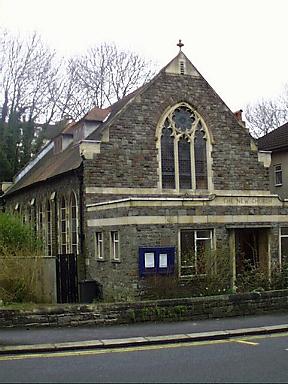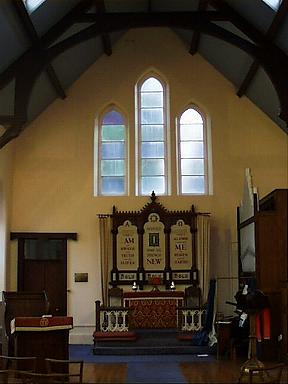
(Swedenborgian)
The Churches of the Bristol Society
The Bristol Society of the Swedenborgian or New Church was founded in 1792. The earliest church, never licensed was replaced in 1792 by a second building in Silver Street in 1819. It was adjacent to the Bridewell Police Station and closed due to falling numbers in the late 1820s. The Society's church was destroyed by fire during the Bristol Riots of 1831. Following the success of the Bath New church (founded in 1830, and provided with a Grecian-style chapel in 1844) and it hosting the Annual Conference of the church in 1845, the Bristol Society was revived, meeting close to what is now the Colston Hall, maybe at Lodge Street Chapel (built by the Countess of Huntingdon Connexion), and later at premises close to The Triangle, Clifton, and the Odd Fellows Hall in Rupert Street.
A new church was provided in Terrell Street, opening 7th April 1878. It was built of iron, with small gothic windows. After some years this iron church received a stone facade, one minister remarking it was " a tin church with a false facade." The site is now covered by the ever-spreading Royal Infirmary (B.R.I.), who purchased the building in 1898 but allowed services to continue there until the church was reprovided. Several sites were looked at, and in the end the church moved to its present site in Cranbrook Road, Bishopston.

The church , called Immanuel Church until 1921, was begun after July 1899 and the first service was planned for Christmas Day that same year. The plain rectangular exterior is in Pennant Stone with Bath Stone dressings, with paired lancet side windows, a stepped triplet at the east end and a three-light window with cusped lights and octofoil at the west end. Originally there was a wooden narthex porch but this was replaced in 1960 by a new narthex planned to also serve as a hall. At the rear of the church are several rooms and stairs down to an undercroft.

The interior is simple, well lit from plenty of windows, including extra dormers in the pitch of the roof. The most noteworthy feature is the sanctuary fittings, the altarpiece given in 1927.
Since this page first appeared online in 2000, the church has finally closed and sold for conversion to housing. This work was underway in June 2015.
For further details please contact Neil Marchant who has written an excellent history of the Bristol Society, published in 1999. Copies of this may still be available from him.
Back to Bristol churches Index